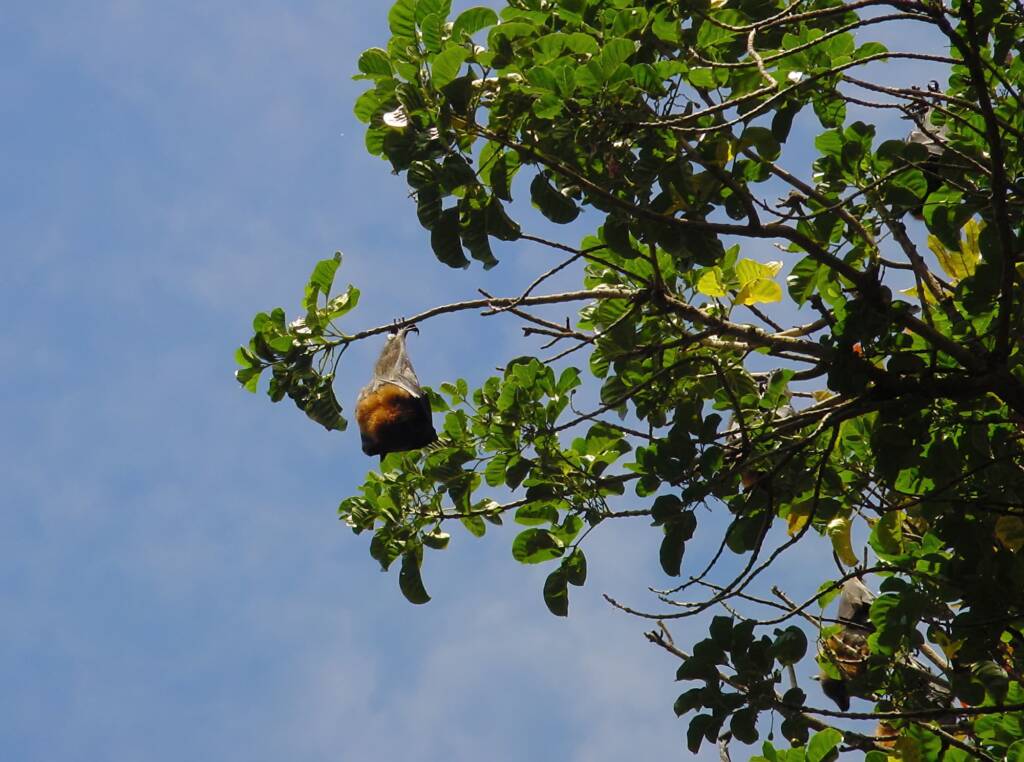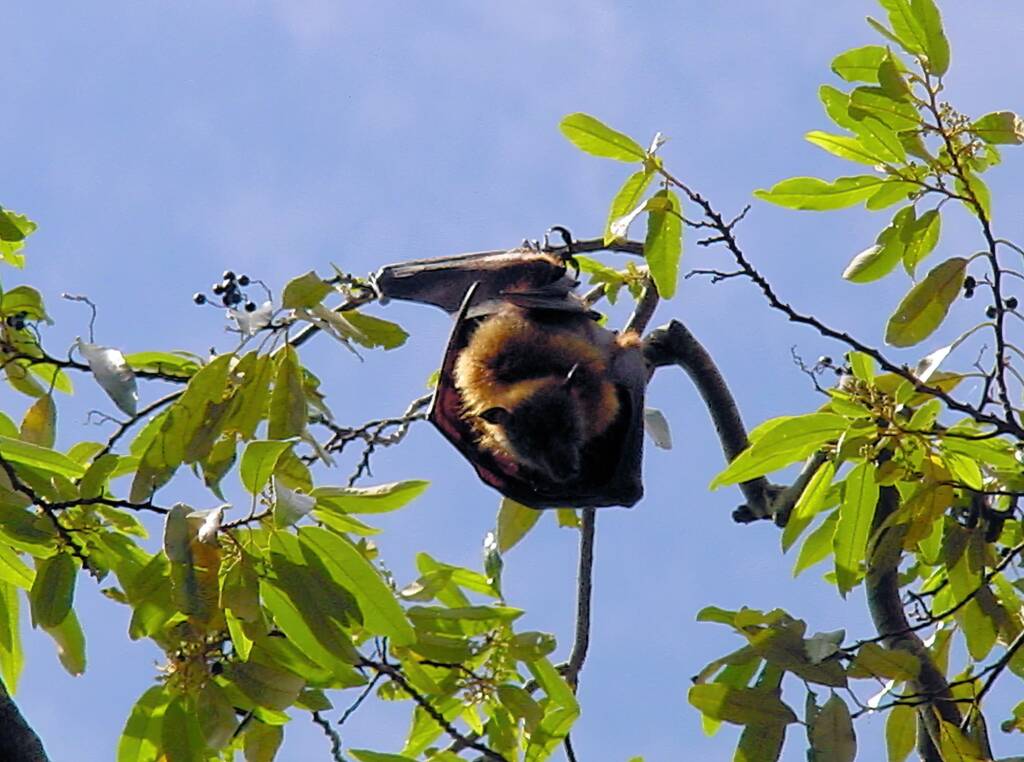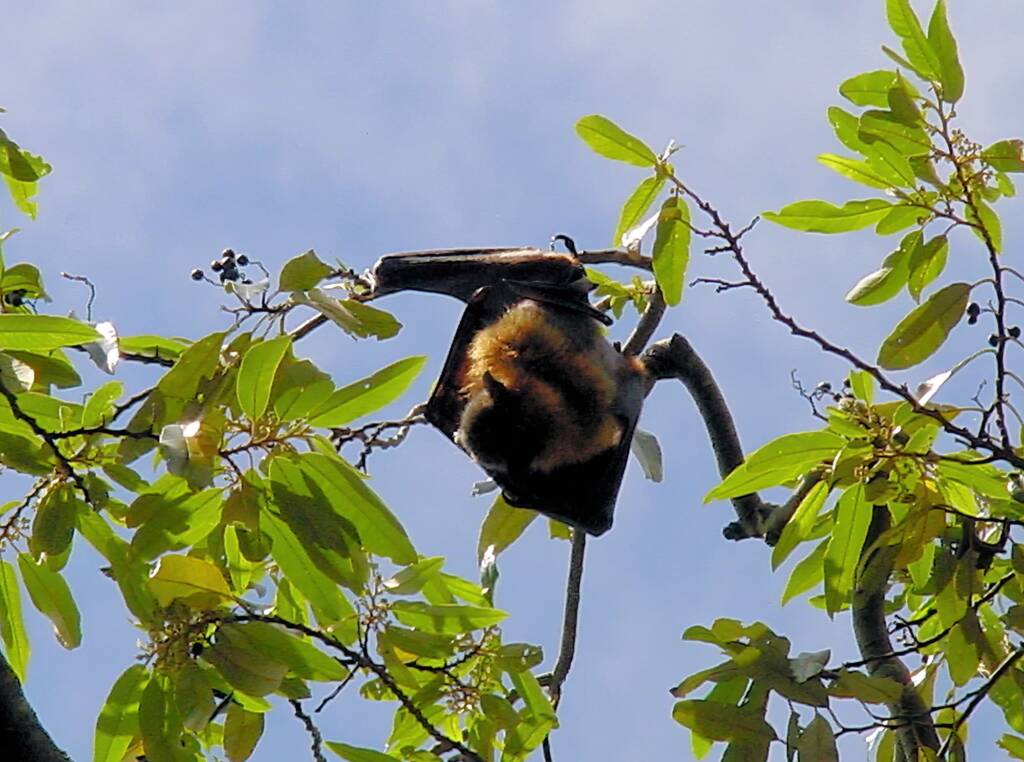RBGS FaunaBottlebrush Sawfly (Pterygophorus cinctus) Grey-headed Flying Fox (Pteropus poliocephalus)
For decades, the Royal Botanic Garden Sydney was home to a large colony of native Grey-headed Flying Foxes. The colony had grown over time, with an estimated number of about 20,000 bats.
The roosting behaviour of the flying-foxes caused the defoliation of the trees on the branches that they would roost on, which in turn led to the poor health of the trees and palms, and sometimes resulting in death of the trees and palms.

Inevitably, their roosting behaviour in the botanic garden (especially around the Palm Grove Centre), caused significant damage to the trees, with dozens of historic trees being severely damaged and in some cases killed. It has been reported that they had killed 28 mature trees, 30 palms and many understorey plants.

In May 2010, the Sydney Royal Botanic Garden Trust in their attempt to conserve the living botanical collection, announced a plan to evict the colony from the gardens by driving them away with repeated playing of extremely loud recorded noise. Court action by an animal welfare group, delayed the plan, until approval was given to the trust to proceed in June 2012. By June 2013 the bats had left the Sydney Royal Botanic Garden, allowing the damaged trees to recover.

In the greater Sydney region there have been reported that there were at least 17 flying-fox colonies, that includes a colony at Lachlan Swamp (within Centennial Par) and Parramatta River (within Parramatta Park).
The Flying Foxes are important pollinators, especially of the eucalypt forests and woodlands of eastern and northern Australia. Their main food source is that of protein-rich pollen produced by Eucalyptus flowers. The Eucalyptus trees require the pollen from other trees (of their own species) for them to produce fertile seed. The Flying Foxes will feed on the nectar and pollen. Some pollen grains will stick to the fur on their bodies. They will travel to other trees and flowers (their foraging range can be up to 100 km in a night), resulting in the pollen fertilising the flowers in those trees.
The pollination and seed dispersal by the Flying Foxes ensures a healthy eco-system. Being in such large colonies, the Flying Foxes play an important and effective role in the flora and fauna of the region.
Through pollination and seed dispersal, flying-foxes help to provide habitat for other flora and fauna species and also help to sustain Australia’s hardwood timber, honey and native plant industries. But to be effective in this role, flying-foxes need to be in large numbers.

Footnote & References
- The Royal Botanic Garden Sydney, https://www.rbgsyd.nsw.gov.au/
- Grey-headed flying fox, Wikipedia, https://en.wikipedia.org/wiki/Grey-headed_flying_fox
- National Recovery Plan for the Grey Headed Flying Fox, Department of Agriculture, Fisheries and Forestry, https://www.agriculture.gov.au/sites/default/files/documents/recovery-plan-grey-headed-flying-fox.pdf
RBGS FaunaBottlebrush Sawfly (Pterygophorus cinctus) Grey-headed Flying Fox (Pteropus poliocephalus)
The Royal Botanic Garden SydneyArt and Sculpture RBGS Fauna RBGS Flora
SydneySydney Art Sydney Accommodation Sydney Attractions Sydney Cityscape Darling Harbour Sydney Fauna Sydney Flora
New South WalesBarunguba Montague Island Bourke Blue Mountains Bundeena Central Coast Kosciuszko National Park Mount Kaputar National Park Lower North Shore Northern Beaches Sapphire Coast Snowy Mountains Region South Coast Stony Range Regional Botanic Garden Sydney






